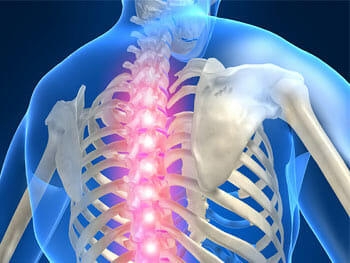
A worker falling from a scaffold, platform or forklift just doesn’t have time to react in a way that could lessen his injuries on impact. In fact, it only takes 2.5 seconds to fall 100 feet. That’s not much time, is it? And falls of shorter distances take seem to happen almost instantly but can be just as deadly. That’s why workers must be protected from falls by safety harnesses and lanyards. Safety belts alone don’t do the job.
It’s critical to note, however, that all the safety equipment in the world will not help if it is not properly installed and if the worker is not adequately trained in its use.
- According to an OSHA incident report, a Circuit City employee was restocking a New Hampshire warehouse shelf with a color television, using a stock picker lift. He fell approximately 8 feet from the picker to the concrete floor. The employee suffered severe head trauma and died in the hospital two days after the accident. He had been wearing a body belt, but the belt was not properly attached to the stock picker. In addition, the guardrails on the picker’s work platform had been removed.
- An employee of Baxter Auto Parts Inc. in Oregon was operating a stock picker type powered industrial truck in their warehouse. He fell approximately 13 feet, suffering lacerations to the head and a concussion, because he was not wearing any form of fall protection.
- A worker for an information management warehouse in Oregon was in an aerial lift about 12 feet above the ground when he fell, landing on the concrete floor, fracturing most of the bones in his face and sustaining a traumatic brain injury. This employee was wearing a fall protection harness, and a lanyard was attached to the tether-mounting bar, but the lanyard was not attached to the harness.
Worker Safety & Court Rulings
A recent court case was brought on behalf of a stock picker at Best Buy in Bloomingdale, Illinois. Christopher Connors, 29 years old at the time of the accident, was retrieving a television from an elevated storage area of the department store. He had a safety belt around his waist which was supplied by the manufacturer of the picker lift. The belt was loose, however, and when Connors fell from the lift platform, the belt slipped off over his head. He suffered severe spine and back injuries. The lift manufacturer paid $1.2 million in settlement of the claim that the company negligently failed to mandate the use of a full body harness and did not provide Best Buy with adequate instructions and warnings.
The latest safety standard, developed by the Industrial Truck Standards Development Foundation and accepted by the American National Standards Institute (ANSI), specifies the appropriate type of safety lanyard and harness for man-up lift trucks according to the weight of the worker. It also eliminates the use of fixed-length, non-absorbing lanyards, in favor of energy-absorbing or self-retracting lanyards.
For example, an operator weighing less than 220 lbs. may use a body belt with a self-retracting lanyard, or a full-body harness with an energy-absorbing lanyard (maximum 6 feet in length), or a full-body harness with a self-retracting lanyard. If the operator weighs between 311 and 400 lbs., only a full-body harness with a self-retracting lanyard may be used. Of course, there are intermediate weight categories as well.
The new standard addresses the increase in the average weight of Americans over the past decades.
Safety Procedures
In addition to providing and requiring fall protection equipment, it is important that warehouses follow certain operating procedures to keep stock pickers safe. The working platform should be elevated only when actual order picking is in progress. Employees should be instructed on the load capacities and stability characteristics of the equipment. Employees should be trained to look for hazards and obstructions, both overhead and on the ground.
With the proliferation of big box stores, discount warehouses and distribution centers for on-line retailers, the demand for order pickers is likely to increase. We’d like to think that wouldn’t make the injury statistics increase as well. But if you or someone you love has been injured in a Maryland warehouse accident caused by a failure to provide adequate safety equipment, employ proper procedures, or thoroughly train order pickers, call Steve Heisler, The Injury Lawyer, at (410) 625-4878.
